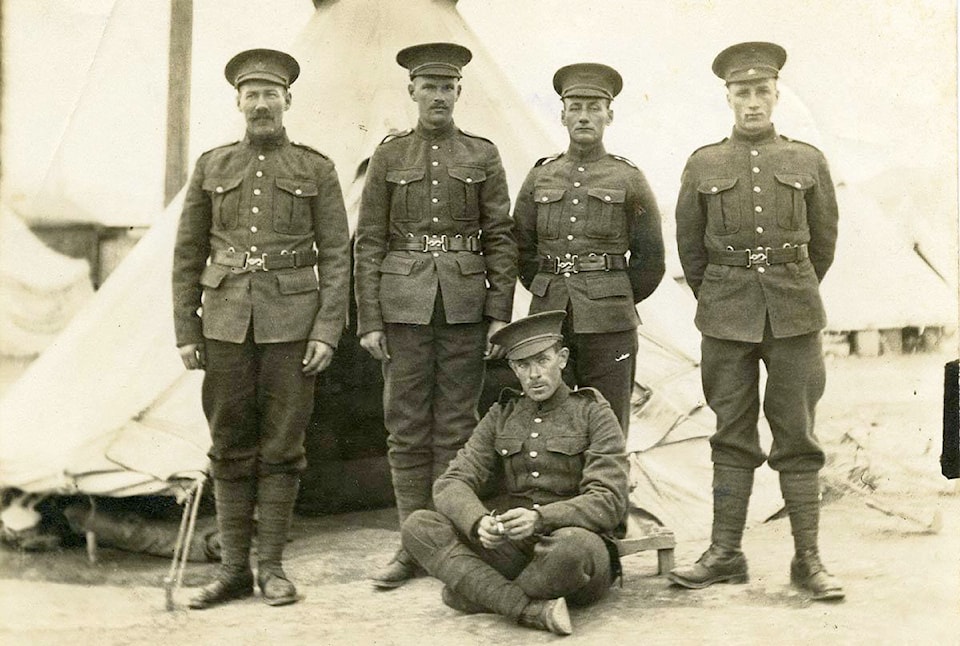On November 11 we honour the men and women who served to protect our country and its precious resources, most importantly their families, friends, and home communities. This year marks the 99th Remembrance Day, the first one initiated in 1919 by King George V, following the First World War. Sadly, as the fighting continues within and between our world’s nations, the Canadian Armed Forces is constantly expanding, requiring additional financial support and a steady supply of fresh cadets.
Most Canadian families include members who have served in the army, navy, or air force. We are all familiar with the daily life of a soldier, and are more recently hearing about how to help our veterans readjust to civilian life following their service. I only wish we started to seek out this knowledge about a century ago to assist so many of our own transition back into home life following the wars. How many of our soldiers had to deal with what we know today as Post-traumatic Stress Disorder (PTSD) on their own?
| Pilot’s badge presented to Flight Cadet Harold Klein of Agassiz at the 4 Flying Training School in Calgary on December 5, 1952. (Agassiz-Harrison Historical Society) |
This month, I wanted to take the opportunity to provide a brief history of the Canadian Women’s Army Corps (CWAC), represented here by Second Lieutenant Dorothy C. Clark of Agassiz. While many women served as nurses in the wars prior to 1939, it wasn’t until several volunteer women’s military auxiliary groups, including what would become the British Columbia Women’s Service Corps out of Victoria, led and organized by Joan B. Kennedy, lobbied the federal government following the commencement of WWII, that the CWAC was finally formed on Aug. 13, 1941. While these women remained segregated by their gender, they were permitted to enlist in support roles such as drivers, cooks, clerks, typists, stenographers, telephone operators, messengers, and quartermasters. The CWAC was fully integrated into the Canadian Army, including rank structures and insignia on March 13, 1942. On Sept. 30, 1946, the federal government disbanded CWAC, noting that women’s services were no longer required in peacetime. Between 1941 and 1946, 21,624 Canadian women joined and served with CWAC. For additional information on CWAC, please visit warmuseum.ca.
| Second Lieutenant Dorothy C. Clark of Agassiz, receives her pips during the Canadian Women’s Army Corps Tattoo and graduation in Sherbrooke, Quebec on April 2, 1943. (Agassiz-Harrison Historical Society) |
Our communities of Agassiz, Harrison Mills, and Harrison Hot Springs have seen their fair share of young people head off for training, or in some cases, to combat. Locally, they are honoured at the Royal Canadian Legion Branch 32 in Agassiz and by physical and virtual exhibits curated by the Agassiz-Harrison Historical Society.
Shared here are a few of the military photographs currently housed in the Agassiz-Harrison Museum’s archival collection. We are always looking to expand our exhibit, so if you have images or items you would like to share, please feel free to get in touch with us at agassizharrisonmuseum@shawbiz.ca or 604 796 3545.
– Lindsay Foreman, Manager and Curator, Agassiz-Harrison Historical Society
lindsay@agassizharrisonmuseum.orgs
| First draft from A6 Canadian Engineers Training Centre Vedder Crossing to leave during the summer of 1943. (Agassiz-Harrison Historical Society) |
